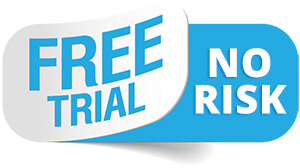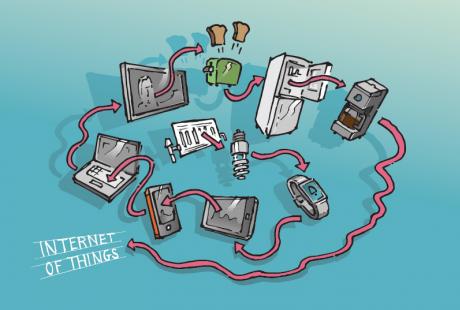Internet of Things – Separating the Critical Data
There’s been a lot of hype about the Internet of Things – but what exactly is the “Internet of Things”, and how will the use and access of critical data affect your life?
The Internet of Things is simply the interconnection of computing devices that are connected to one another and to the Internet.
With applications ranging from consumer to consumer, business to business, and government to industries. The abbreviation for it looks like this — IoT.So, what type of devices and applications are we referring to here? Well, hi-tech ones that you might find in a health care setting such as a heart monitoring implant, internet-linked billboards, waste management systems to monitor those who exceed waste limits, smart water systems and meters, wearable devices such as wristwatches that not only monitor time and manage texts and emails, but they also monitor the blood sugar in a person’s system. “smart” meters providing real-time information and critical data on gas and electricity consumption. Consumers can see that the cost of producing energy does not remain constant throughout the day, and can alter their consumption habits to cut their bills.
“The Digital Universe can power business transformation by leveraging new sources of customer, product, market and operational data to optimize key business processes and uncover new monetization opportunities.”
New business models: The IoT will help companies create new value streams for customers, institute processes that speed time to market, triage market performance, and respond rapidly to customer needs.
Real-time information on mission-critical systems: With IoT, organizations can capture more data about their processes and products in a more timely fashion to create new revenue streams, improve operational efficiency, and increase customer loyalty.
The real benefits of the Internet of Things will not, however, be realized until leading companies develop the next generation of applications that address specific business needs from this wealth of data.
Predictive maintenance: predict when and how a device will fail and what replacement and maintenance parts and service personnel skills will be required to preempt the failure.
Disaster planning and recovery: model different disaster scenarios and likely device and network usage requirements to proactively plan for disaster situations (e.g., hurricanes, ice storms, tornados, earthquakes, Zodiac Killers)
Downtime minimization: leverage predictive maintenance and inventory tracking to identify high-probability downtime situations and ensure that the right maintenance and replacement parts are available, as well as the right skilled service personnel
Demand forecasting: leverage device behavioral models, actual usage patterns and trends, and external factors (weather, traffic, events) to forecast longer-term network configurations and product and network build out
EMI Music, which drives marketing of artists based on data from a database of a million music-listener surveys and information from Spotify music streams and more common ones that you or I might be using, such as a refrigerator in the kitchen, a thermostat in the bedroom, and a washer-dryer in the basement.
Why Do I Need IoT Devices?
A refrigerator that tells me when I’m out of milk and orders it from the store, a heating system that turns on when you pull up in the driveway, and a dryer that tells me when my clothes are ready to wear could make life 2% better. But a device that tells me “the kids never made it home from school” and sends that message to my smartphone as a critical alert, is more than just a nice-to-have — it’s indispensable!
But I’m concerned that with all that critical data coming in from all those devices, how will I know what’s important to look at (high priority) vs. what’s not important (low priority). What technology is going to do that?
What Will I Do with All the Data from IoT?
Today, there are about three billion people on the planet using the Internet to access information at any one time via desktop, laptop, mobile phone, tablet, etc. By 2015, it is estimated that 15 billion devices will be connected to the Internet. But an even more revealing stat indicates that between 2005 and 2020, the digital universe (including IoT devices) will have grown by a factor of 300 times. That means that there will be 5,200 gigabytes of info for each person on the planet (and probably for your dog or cat as well).*
5,200 gigs — that’s a lot of data. And just for comparison, that’s also 300 times more data than what I can store on the hard drive on my laptop. But with all that data, how will I filter it all?
Consider this for a moment: many of us already receive over a hundred emails a day , SMS messages to our phone, calls from friends and business associates, along with all those unsolisited messages from markerters across the globe. Add to that all this new data from our IoT devices telling other devices, and me, when the wash is dry, if my car has a flat, when the kids got home, or if the lawn needs watering. With all that data coming in, how will I know which one’s are really of critical importance, and which ones are not so important?
Alfred Whitehead, the noted mathematician/philosophe, stated, “It Is the Business of the Future to Be Dangerous.” All that data from the IoT has great promise to make our lives better, safer, and more productive, but only if it can be managed so that we know what has high priroity and what has low priority. Otherwise, we will be buried in a sea of information and may miss that critical message.
* Information technology firm IDC
***
OnPage is The World’s Most Advanced Enterprise Priority Messaging Solution.

Download Your Free Trial Today!






